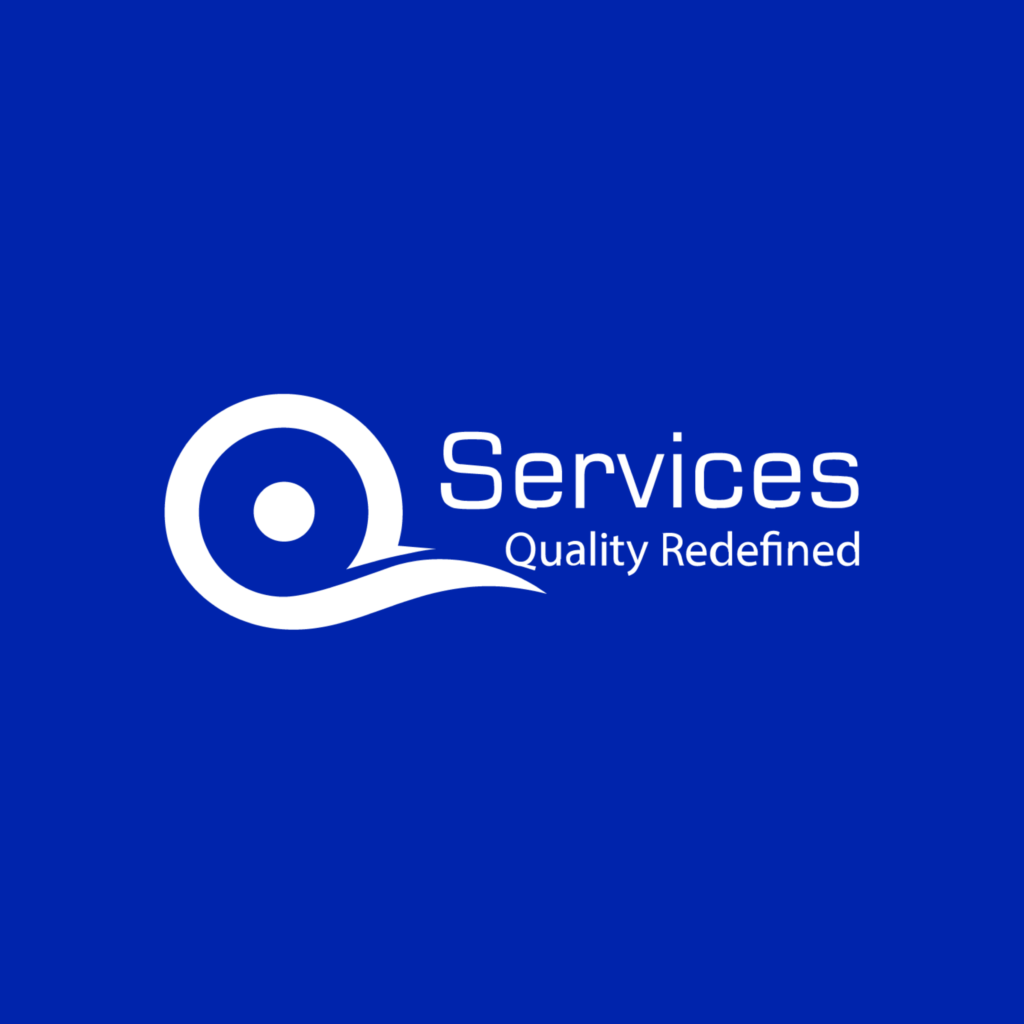
Rewards
.





CANADA
55 Village Center Place, Suite 307 Bldg 4287,
Mississauga ON L4Z 1V9, Canada
Certified Members:
.



Home » How IT Staff Augmentation Enhances Project Flexibility ?

In today’s fast-moving business world, being adaptable is crucial for success. Companies need to be quick and ready to change direction to grab new opportunities and tackle unexpected problems. IT staff augmentation is a smart strategy that helps businesses stay flexible. It allows companies to quickly and efficiently expand their teams, ensuring they have the right skills when needed. By using IT staff augmentation, businesses can respond fast to changing needs, meeting project demands without the delays and costs of traditional hiring. This approach gives companies the agility they need to succeed in a competitive market. In this blog, we will explore the impact of IT staff augmentation services on project flexibility.
Project flexibility means an organization can quickly adjust to changes and new demands within a project. This includes being able to change the project’s scope, move resources around, adjust timelines, and use new technologies as needed. In the fast-changing IT world, being flexible is important. According to the State of Agile Report, 95% of companies using agile methods believe it helps them handle changing priorities better.
If a team isn’t flexible, they’ll struggle with problems like delays and going over budget. But teams that use flexible project management can adapt quickly to big challenges, giving them a better chance to succeed.
In project management, various difficulties can arise, posing obstacles to successful project completion. From handling project scope to allocating resources and adapting to technological changes, overcoming these challenges is crucial for project success. Let’s explore some common problems faced by project teams and their impacts.
Scope creep presents a challenge when new requirements emerge during a project, potentially leading to budget overruns and delays. It can disrupt project planning and execution, impacting project success and client satisfaction. According to an IEEE survey, poor scope management contributed to the failure of 92% of projects.
Fixed resource allocation poses a challenge, as unexpected demands can impede project progress. Limited resources may lead to bottlenecks and delays in completing project tasks, affecting overall project efficiency.
Projects relying on outdated technologies face the risk of falling behind and encountering compatibility issues. Obsolete technologies may limit project capabilities and hinder integration with newer systems, impacting project competitiveness.
Inflexible project timelines struggle to accommodate unexpected delays or accelerated requirements. Projects with rigid timelines may face challenges in adapting to changing circumstances, leading to missed deadlines and compromised project outcomes.
These challenges are widespread in the IT sector. Fortunately, there’s a solution: IT staff augmentation. By utilizing this approach, companies can effectively tackle these obstacles and ensure project success. Let’s explore how IT staff augmentation provides the flexibility needed to overcome these challenges and drive IT project excellence.
Get free Consultation and let us know your project idea to turn into an amazing digital product.
An organization can extend its existing resources by hiring an additional team through an outsourcing method called IT staff augmentation. Especially in the IT sector, this strategy of hiring specialists has been around for decades and has become the norm. The practice started when businesses looked for administrators to cover for workers who were ill or needed time off for other reasons. As of right now, the phrase has gained popularity and become part of the IT glossary and vernacular, giving rise to the term “IT staff augmentation.“
IT staff augmentation operates through two primary models: short-term and long-term augmentation.
In the short-term model, companies bring in individuals for specific projects or periods, typically lasting a few months to a year. This approach proves beneficial during peak seasons in the absence of regular staff. By opting for short-term augmentation, businesses can handle workload spikes without committing to full-time hires, subsequently avoiding unnecessary costs during slower periods.
Conversely, long-term augmentation involves hiring additional staff for extended periods, often surpassing a year. For instance, even after a software project is completed, a company might need ongoing support for tasks like managing expanding datasets, maintenance, or making continuous improvements. Both short-term and long-term augmentation present opportunities for businesses to enhance workforce flexibility and scalability, rendering them invaluable choices for adapting to evolving demands in partnership with trusted staff augmentation companies.
Flexibility is essential for the success of IT projects. However, several obstacles often obstruct this adaptability, demanding strategic solutions. Let’s examine these challenges and explore effective ways to address them:
The scarcity of skilled resources poses a critical challenge to project flexibility, as projects often require specialized expertise in areas like software development and system integration. However, when skilled professionals are in short supply, it can lead to delays, compromised quality, and missed deadlines, severely impacting project execution.
Organizations can use external talent temporarily to bridge skill gaps or manage project needs. By augmenting their teams, they tap into a broad talent pool with specialized expertise.
Augmented teams provide access to diverse skill sets, enabling organizations to promptly integrate verified software professionals to meet specific requirements.
Streamlined onboarding processes ensure the seamless integration of skilled resources into projects, reducing downtime and enhancing productivity.
The inflexibility and lack of expertise within project teams create hurdles for adaptability. Whether due to rigid structures or limited skill sets, teams find it challenging to efficiently manage diverse tasks. Consequently, this inability to adapt to evolving project needs often results in inefficiencies and subpar outcomes.
Organizations should motivate team members to develop cross-functional skills, empowering them to handle various tasks proficiently.
Granting team members, the flexibility to assume different roles as necessary cultivates adaptability within the team, guaranteeing alignment between skill sets and project needs.
Creating an atmosphere of transparent communication and collaboration stimulates knowledge exchange and innovation, thereby augmenting team flexibility and expertise.
Rigid project timelines and scope constraints hinder adaptability by confining projects within predefined deadlines and boundaries. This limitation stifles flexibility and innovation, often resulting in rushed work, compromised quality, and stressed teams.
Establishing feasible deadlines and incorporating contingency plans empowers teams to achieve high-quality outcomes while maintaining project scope integrity.
Implementing robust procedures for handling scope adjustments safeguards against scope creep and preserves alignment with stakeholder objectives.
Dividing projects into smaller, more manageable stages fosters adaptability, facilitating timely adjustments and refinements in response to evolving needs.
Scalability challenges significantly affect project flexibility as project requirements constantly shift due to market dynamics, emerging technologies, or changing priorities, necessitating adjustments in resource allocation. However, organizations face inefficiencies in resource utilization and potential cost implications when struggling to scale resources up or down as needed.
Swiftly adapting team size based on fluctuations without the need for hiring or downsizing full-time employees ensures optimal resource utilization and flexibility.
Quickly onboarding specialists for short-term needs ensures that project requirements are met without compromising on quality or efficiency.
Establishing partnerships with reliable service providers ensures access to resources and expertise to meet evolving project demands effectively.
Unforeseen issues, ranging from technical glitches to vendor delays or legal hurdles, frequently emerge during project execution, posing significant risks to success. These unexpected challenges can lead to delays, budget overruns, and compromised deliverables if not promptly and effectively addressed.
Conducting thorough risk assessments in the initial stages of the project and formulating robust contingency plans are vital for mitigating the impact of unforeseen events on project outcomes.
Dynamic and adaptable leadership empowers project managers to swiftly recalibrate strategies and allocate resources in response to emerging challenges, ensuring project success in the face of uncertainties.
Maintaining transparent lines of communication with stakeholders is indispensable for managing expectations and ensuring that all parties are well-informed about project progress, encountered challenges, and ongoing mitigation efforts.
By implementing these mitigation strategies, organizations can effectively address the flexibility needs inherent in IT projects, ensuring successful project execution even in the face of uncertainty and change.
There are some significant ways IT staff augmentation addresses project flexibility:
IT staff augmentation enhances project flexibility by granting organizations access to a diverse talent pool of skilled IT professionals. When faced with resource scarcity, businesses can seamlessly integrate external experts into their teams. This approach ensures that projects have the necessary expertise, allowing for quick adaptation to changing requirements and efficient allocation of resources.
With the capability to tailor their teams according to project requirements, IT staff augmentation offers organizations a vital flexibility that encompasses both team size and expertise. In the face of evolving needs, businesses can seamlessly integrate external professionals into their current teams, thereby ensuring peak performance. This dynamic adjustment of team composition enables organizations to allocate resources efficiently and swiftly respond to market shifts, thereby bolstering project success.
The ability to scale resources up or down quickly as needed emphasizes the scalability benefits of IT staff augmentation, enabling organizations to adjust team sizes efficiently in response to project dynamics.
When unforeseen challenges arise, staff augmentation provides access to additional expertise and manpower. This ensures that projects remain resilient and adaptable. By seamlessly integrating external professionals, organizations can mitigate risks and maintain project success even in dynamic environments.
This refers to an organization’s capacity to flexibly adjust its approach when faced with shifting project requirements and timelines. In dynamic project environments, where goals and priorities evolve, adaptability becomes crucial. IT staff augmentation plays a crucial role in this context. By seamlessly integrating external experts into project teams, organizations can swiftly respond to changes, allocate resources effectively, and maintain project momentum without compromising quality. This adaptability ensures successful project outcomes even in the face of uncertainty.
When project requirements shift (such as modifying software features or integrating new systems), augmented teams can promptly adjust their strategies. Similarly, in the face of changing market demands (driven by emerging technologies or customer preferences), these teams pivot effectively. Their expertise is particularly valuable for short-term initiatives, ensuring successful outcomes without long-term commitments.
IT staff augmentation is vital in agile software development, allowing organizations to quickly adjust team sizes to meet project demands. This flexibility ensures teams always have the requisite skills and resources to deliver high-quality software efficiently. Augmented teams can scale up during intensive development phases and reduce size during maintenance, maintaining agility and avoiding resource gaps. This adaptability aligns with the iterative, collaborative nature of agile methodologies, ensuring rapid, efficient software delivery while upholding high quality standards.
When project objectives change or new requirements arise, staff augmentation enables project managers to efficiently allocate resources. They can quickly scale their workforce with specialized talent without long-term commitments. This approach is especially valuable for short-term initiatives like software development, system integration, or IT support, where additional expertise or manpower is needed.

Establish robust communication with staff augmentation partners. Schedule regular meetings to review updates and address challenges, clearly define roles and responsibilities, and create an open feedback loop for ongoing improvements.
Forecast resource needs based on project phases, workload, and deadlines. Evaluate the necessary skills, identify any gaps, and choose vendors with relevant expertise and a proven track record for successful augmentation.
Establish SMART goals and clearly define the project scope, deliverables, and milestones. Clearly communicate expectations regarding quality, timelines, and communication channels to prevent scope creep and transparently manage risks.
Consistently track key performance indicators (KPIs) related to project progress, resource utilization, and quality. Regularly assess resource allocation for optimal efficiency and develop proactive strategies for risk mitigation.
Businesses seeking increased flexibility can benefit significantly by employing additional staff from our one of the best IT staff development companies. By combining external experts with your existing team, you can adeptly address challenges, ensuring smooth project execution even amidst rapid changes. Understanding your team’s needs is key to enhancing project flexibility. Utilizing the right skills from our IT staff development company not only fills skill gaps but also enhances your team’s problem-solving abilities. Leveraging IT staff assistance extends beyond mere manpower; it fosters innovation and strengthens your team’s capabilities.
So, are you ready to maximize project flexibility with our support? Contact us today to explore how we can enhance your projects. Let’s embark on this journey together and elevate your organization’s success. To further scale your SMB app development and unveil the full potential of staff augmentation, delve deeper into our blog: ‘Scale Your SMB App Development with Expert Help: Unveiling the Power of Staff Augmentation.‘ Explore how our expertise can propel your projects to new heights.

Our Articles are a precise collection of research and work done throughout our projects as well as our expert Foresight for the upcoming Changes in the IT Industry. We are a premier software and mobile application development firm, catering specifically to small and medium-sized businesses (SMBs). As a Microsoft Certified company, we offer a suite of services encompassing Software and Mobile Application Development, Microsoft Azure, Dynamics 365 CRM, and Microsoft PowerAutomate. Our team, comprising 90 skilled professionals, is dedicated to driving digital and app innovation, ensuring our clients receive top-tier, tailor-made solutions that align with their unique business needs.

Every business, big or small, faces the common pain point of balancing the need for specialized skills with the constraints of budget and time. Imagine a company striving to deliver top-notch tech solutions but struggling with an overburdened in-house team. Or consider the frustration of missing out on critical project opportunities due to a lack of specific expertise.

In today’s fast-changing business world, one of the most important decisions companies faces is choosing the right staffing model. According to a 2021 Gartner survey, 64% of IT executives believe the ongoing tech talent shortage is the most significant barrier to adopting emerging technologies.

In today’s fast-paced IT environment, businesses frequently face changing demands that require adaptable staff augmentation solutions. IT staff augmentation stands out as a strategic method to meet these needs, providing a range of benefits alongside potential risks.
Staff augmentation refers to a strategic approach adopted by businesses to enlist external expertise, often sourced from staffing agencies or specialized firms, aimed at bridging skill deficiencies or bolstering their workforce capacity for projects or timeframes.
For small businesses, staff augmentation offers flexible staffing options, access to specialized skills, scalability, cost-effectiveness, and streamlined hiring processes with reduced administrative burdens.
Businesses should assess their internal capabilities and resource constraints to determine when to leverage external resources through staff augmentation, ensuring optimal utilization and alignment with strategic objectives.
IT staff augmentation allows organizations to quickly adjust team sizes based on project requirements, ensuring teams always have the right skills and resources to deliver high-quality software efficiently.
Industries like technology, finance, healthcare, e-commerce, and manufacturing often use IT staff augmentation services to tackle their unique IT requirements and challenges.
.





55 Village Center Place, Suite 307 Bldg 4287,
Mississauga ON L4Z 1V9, Canada
.




Founder and CEO

Chief Sales Officer

🎉 Thank you for your feedback! We appreciate it. 🙌